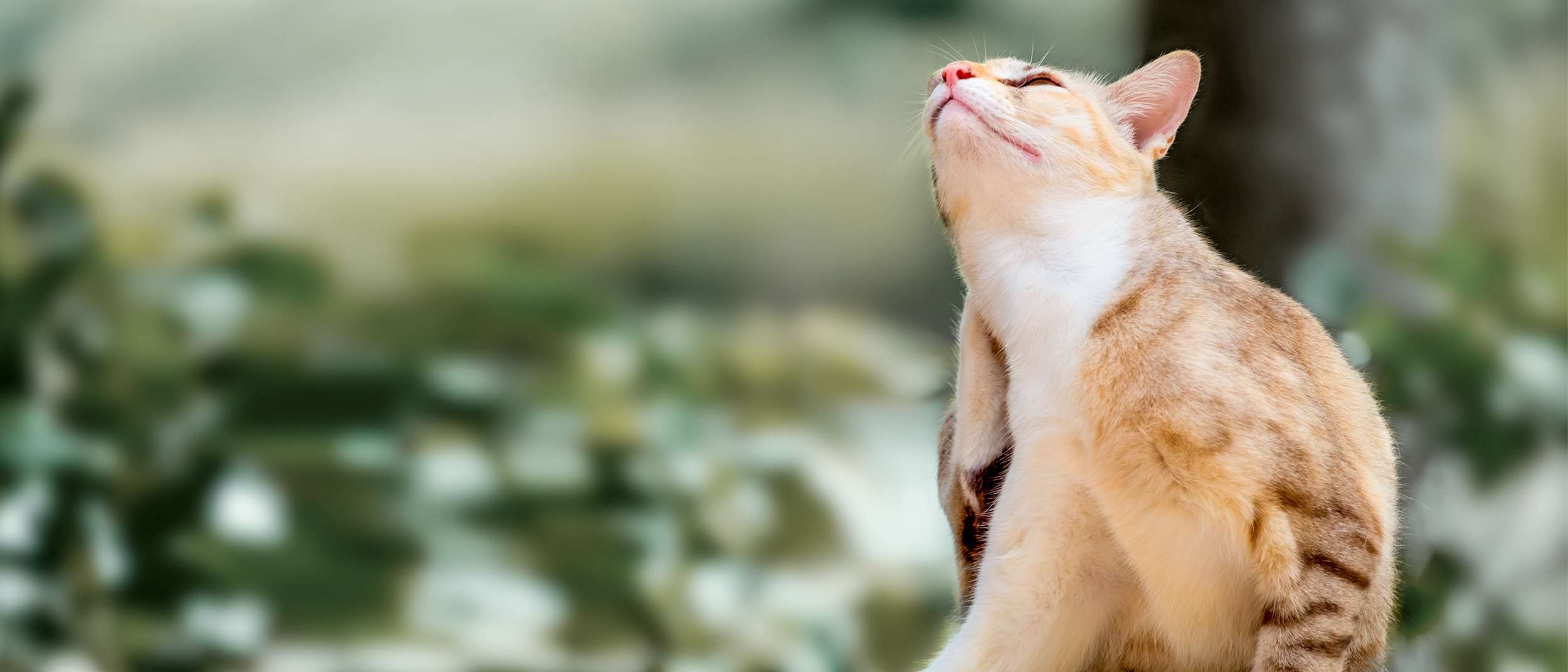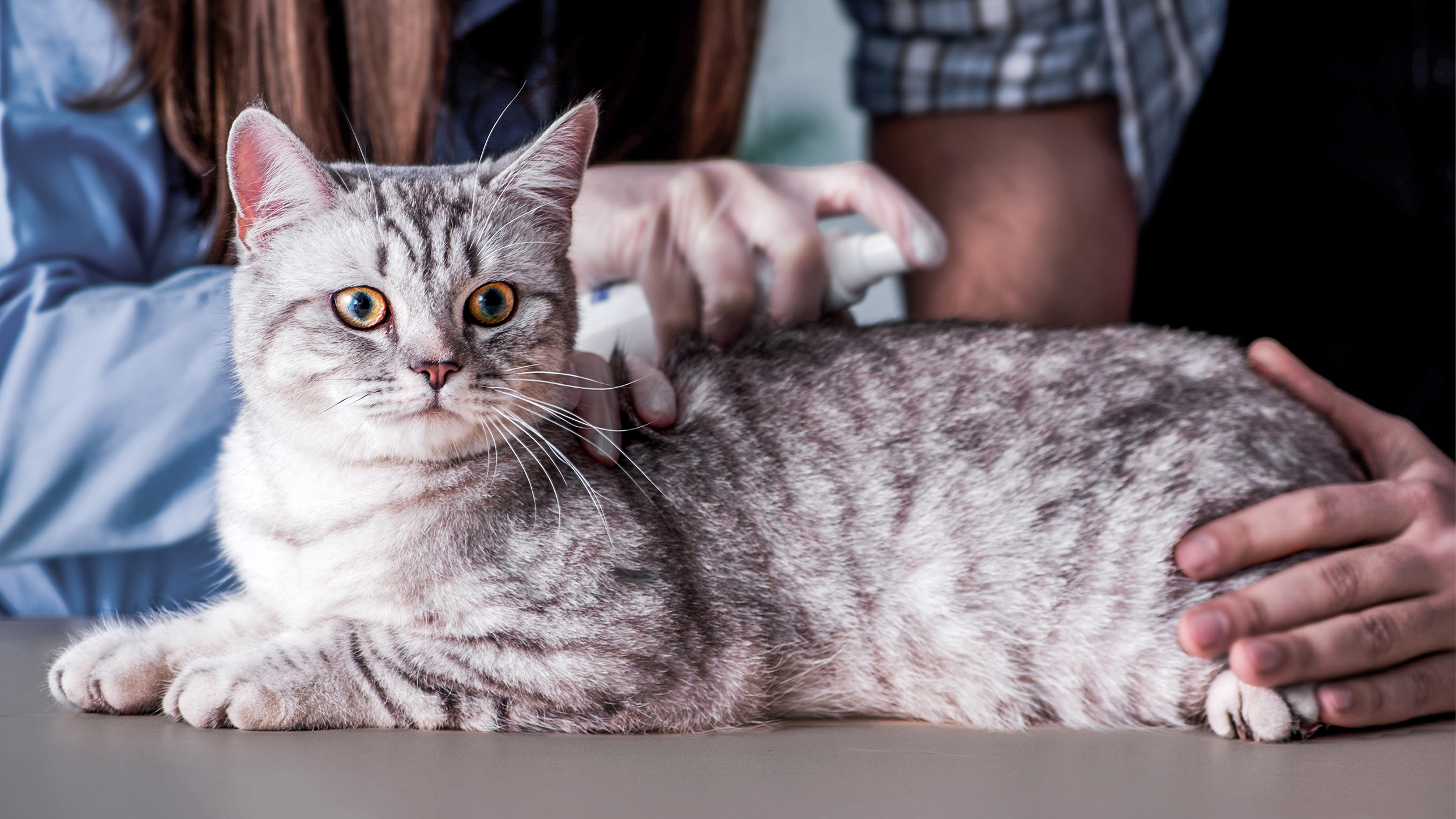Common skin conditions in cats
Article

Your cat's skin is a large organ which needs micro- and macronutrients to stay healthy; anything which interferes with the absorption of those nutrients will affect your pet's skin and coat. Thankfully, many of the most common skin conditions are treatable, whether they are internal or external issues.
Parasitic infestation in cats
Parasites, which latch onto your cat's skin, can cause irritation and discomfort, sometimes leading to hair loss or other noticeable problems.
Fleas are an incredibly common issue among cats. These small parasites land on your cat's skin, causing the cat to scratch, lick, and groom itself to get rid of the itch. This, in turn, can cause hairballs as your cat ingests significant amounts of their own hair. Cats can also develop dermatitis if they become allergic to flea bites, which can occur if they have been over-exposed to flea bites. This may occur depending on an individual cat's history and previous exposure to fleas.
Ticks find their way onto your cat after they've been outside and can stick to their neck and ears causing inflammation. Some types of ticks are found on plants at certain times of the year and can infest humans and other mammals as well as cats.
If you notice your cat is incessantly scratching and has a lot of black wax in their ear, they may have ear mites. These live in the ear canal and cause ear pain, which can be very uncomfortable.
While your cat won't always feel irritated or scratch itself, ringworm can still cause skin problems. This microscopic fungus attacks your cat's fur at the root, darkening the skin and causing the coat to fall out.
All parasitic infections can be treated with a combination of oral, spray, direct-to-skin, and environmental solutions which your vet will prescribe. In the case of fleas, it's important not to use products designed for dogs on your cat, as they can be fatal.

Your cat's diet and skin condition
Your cat's hair is 95% protein, with hair growth and skin renewal using up to 30% of your pet's daily protein intake.1 Therefore, a protein deficiency in your cat's diet can lead to poor skin and coat quality, including scaly skin, hair which is easily shed, color changes, poor growth and thin, dull or brittle hair.
If your cat is lacking essential fatty acids, like omega-3 and omega-6, you may also notice problems such as oily or dry skin, and hair with a dull sheen. Some essential fatty acids can't be synthesized by your cat, so they need to be a part of its daily diet.
Giving your cat a complete, balanced food is the simplest way to protect against these deficiencies; you can also get food which is designed for cats struggling with their dermatological health, which will promote their skin and coat quality.
A cat's skin condition and lifestyle factors
If your cat regularly ventures outside, you might find it's prone to picking up environmental debris which irritates its skin, such as splinters or grass seeds; remember to pick these off when your cat comes in from outside to prevent scratching or itching.
You may also find your cat occasionally gets bitten by other animals. These bites can become abscesses if germs get into the wound, causing swelling, inflamed skin and a temperature. Your vet will conduct a deep cleanse of the wound as part of the treatment.
Bathing your cat can be a good idea as recommended by your vet but be careful to only use products designed for cats; human shampoo can end up irritating them and causing skin problems.
If you think your cat might be suffering from a skin condition, consult your vet right away—you'll be able to start treatment quickly and help prevent any discomfort for your cat.
1 Pibot et al, eds. Encyclopedia of Feline Nutrition, 2010.
Find a vet
If you have any concerns about your cat’s health, consult a vet for professional advice.
Like & share this page